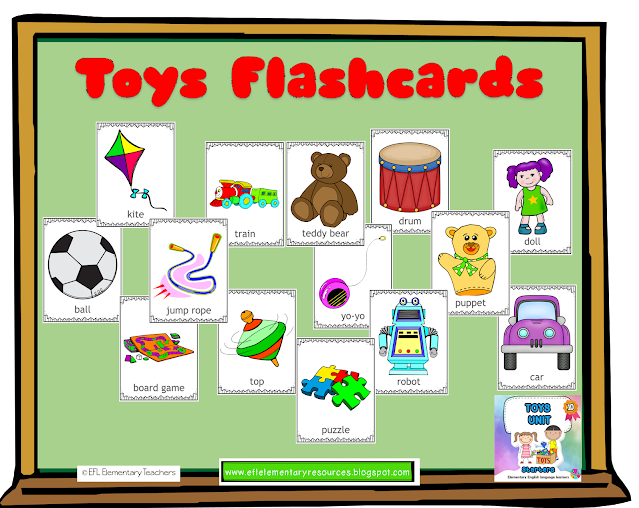Find the resource by clicking at the link:
https://www.teacherspayteachers.com/Product/Zoo-Animals-Flashcards-for-EFL-3611842
Teaching the zoo unit provides a real-world context that is relevant to children's lives. The theme is across the science subjects. Many students might have been to a zoo and it will be fun to know their experiences.
Write the word zoo on the board and ask
students the name of zoo animals they know. Start putting them on the board as
they say the word as in a mind map.
Teacher: There is a bear in the zoo.
Have students make similar sentences.
Model
demonstrative sentences using the zoo animals for describing.
Teacher: This is
an elephant. It’s gray.
Students: This is
a lion. It’s brown.
Place
the flashcards on the board and write a number next to it. Ask questions:
What
is number 2?
Teacher: What
color is number three?
Students: orange!
Teacher: is number
five an elephant?
Students: Yes, it
is.
Teacher: is number
two a bear?
Students: No, it
isn’t. It’s a, monkey.
activity: Listen and stand up! Distribute all the
flashcards to all the students, you can even give out more than one. Call out
an animal and the student who has it must stand up and say the word. That
student
can´t sit down again. Play until there is one student left, who is the
winner.
Animals come in groups and use it for
reviewing plurals. Write a number next
to each flashcard. Ask questions: Look at flashcard number 2. What
are they?
Look at flashcard
number 3. Are they lions?
Students: Yes,
they are.
Look at flashcard
number 4. Are they zebras?
Students: No, they
aren’t.
Play Yes or No! Print and have ready the puppets. One per
group or for each child. Students can also make their own puppets by gluing the
cards onto wooden sticks of your preference.
You can ask questions: Is this a penguin?
and the students will show the corresponding card puppet and say:
Yes, it is !
As a variation, say statements like: This is a green penguin!
Use
the puppets with any unit or theme.
Finally, here's the video:
Follow me at my TPT store! Get notifications when new resources are
listed.
https://www.teacherspayteachers.com/Store/Holistic-English-Resources-By-Rosa-Amelia



.png)

































.png)
.png)
.png)
.png)

.png)
.png)




